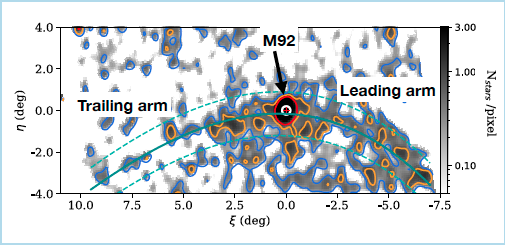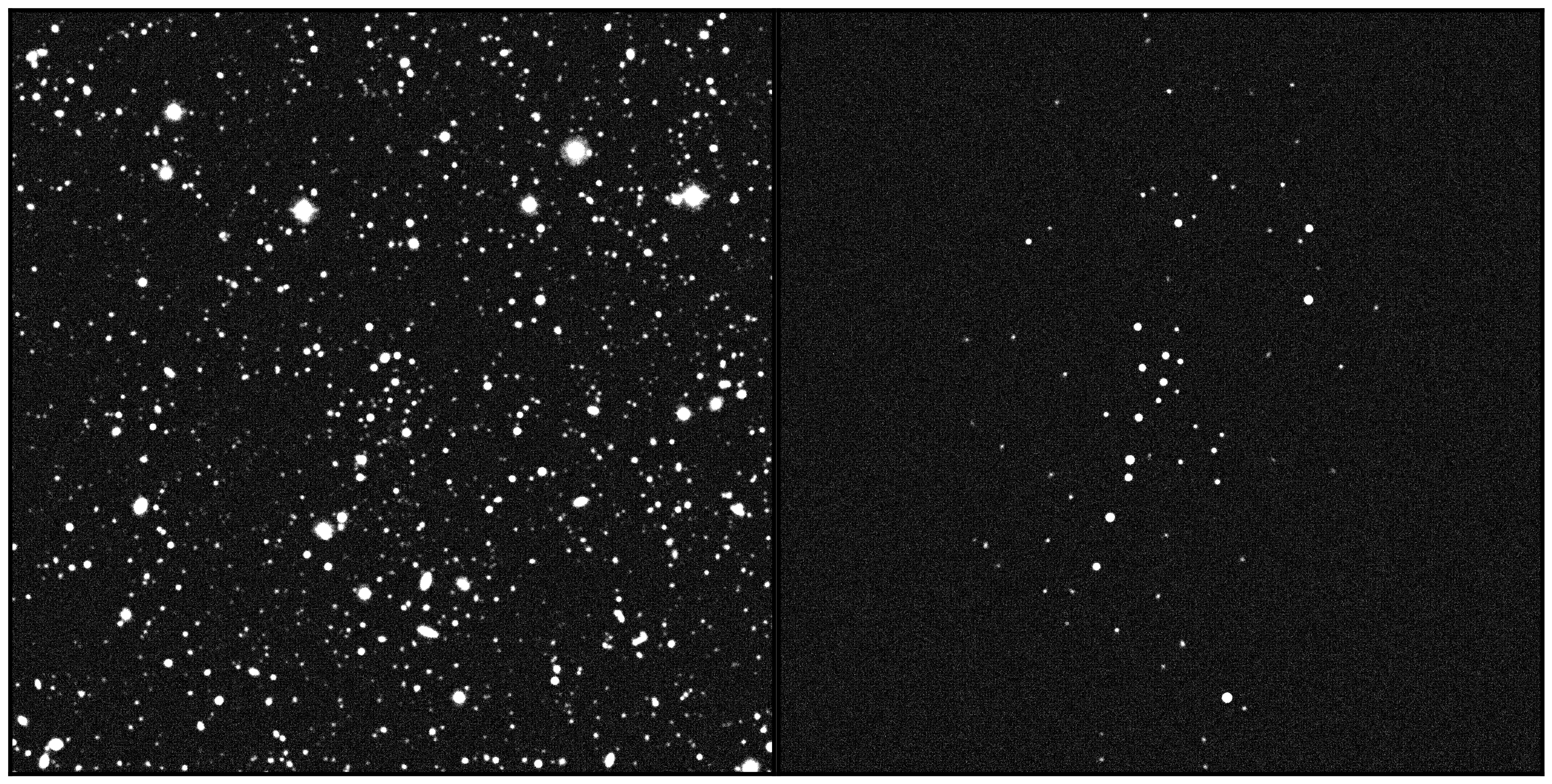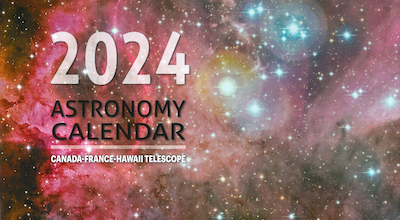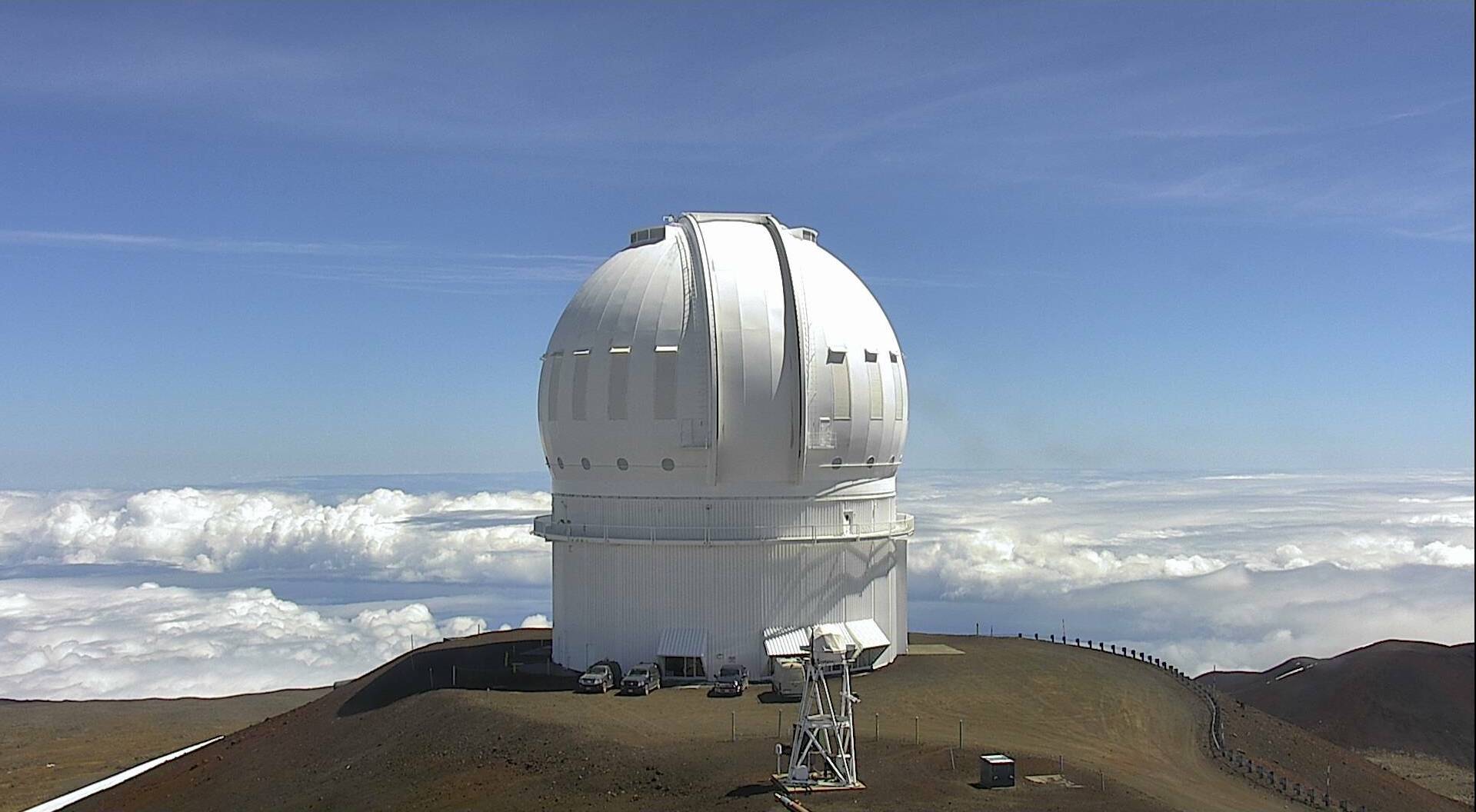New M92 Stellar Stream Discovered
A team of astronomers using the Canada-France-Hawaii Telescope discovered a new stellar stream emanating from the M92 globular cluster. This new stream suggests that M92 is actively being disrupted by tidal forces caused by our Milky Way Galaxy. This discovery utilized high quality data obtained as part of the Canada-France-Imaging-Survey (CFIS) using MegaCam at CFHT and from the Pan-STARRS 1 (PS1) survey on Haleakalā, Maui. The discovery of a stellar stream around M92 raises the question of the cluster's origin and could be used in the future to probe the innermost region of our Galaxy. The team estimates that stellar stream has a mass equivalent to ~10% of the mass of the entire M92 cluster.
Stellar streams are long thin streams of stars formed as globular clusters or dwarf galaxies are ripped apart by the immense gravity of the Milky Way. The structures formed by these tidal forces are stable over many billions of years. Their longevity allows astronomers to use their presence to better understand the formation of galaxies like the Milky Way as a guide to determine the role of galactic cannibalism in galaxy formation. Additionally, stellar streams are excellent tools to probe the gravitational potential of our Galaxy and study the distribution of dark matter around it.
“Our simulations of the M92 stellar stream indicated that the stream was likely formed recently, in the last 500 million years,” said Guillaume Thomas, lead author of the paper published in The Astrophysical Journal and who led this work while an NRC Postdoctoral Fellow at Canada's Herzberg Astronomy and Astrophysics Reserach Center. “The cluster’s age is around 11 billion years, which indicates that the cluster was not always in its current orbit and makes us wonder where M92 originally orbited.”
The team identified the 17° long stellar stream from the M92 globular cluster stream using an improved matched-filter method. This method aims to highlight a specific known signal in a noisy dataset and proves to be an extremely efficient tool to detect stellar streams around the Milky Way Galaxy.
Despite previous observations in this region, the newly discovered M92 stellar stream was hidden by the high number of foreground stars from the Milky Way disk. It was discovered because of the combination of high quality images from both CFIS and Pan-STARRS. The team also used proper motions obtained by the European space mission Gaia to confirm the existence of the stream.
The Canada-France Imaging Survey is an ongoing large program at CFHT using MegaCam. Allocated 271 nights, CFIS aims to address some of the most fundamental questions in astronomy including the assembly of the Milky Way, properties of dark matter and dark energy, and the growth of structure in the Universe from galaxies to clusters.
"The discovery of the M92 stellar stream is a testament to the power of the CFIS/PS1 collaboration and the unique capabilities of MegaCam," says Todd Burdullis, queue observing specialist at the Canada-France-Hawaii Telesope. "The CFIS program is not complete and already the data are enhancing our understanding of the Milky Way. We expect more discoveries like this from the CFIS team in the coming years."
Link to the paper
Contacts
Science Contact
Guillaume Thomas
Juan de la Cierva fellow
Instituto de Astrofísica de Canarias (IAC)
guillaume.thomas.astro@gmail.com
Media Contact
Mary Beth LaychakCanada-France-Hawaii Telescope
laychak@cfht.hawaii.edu





